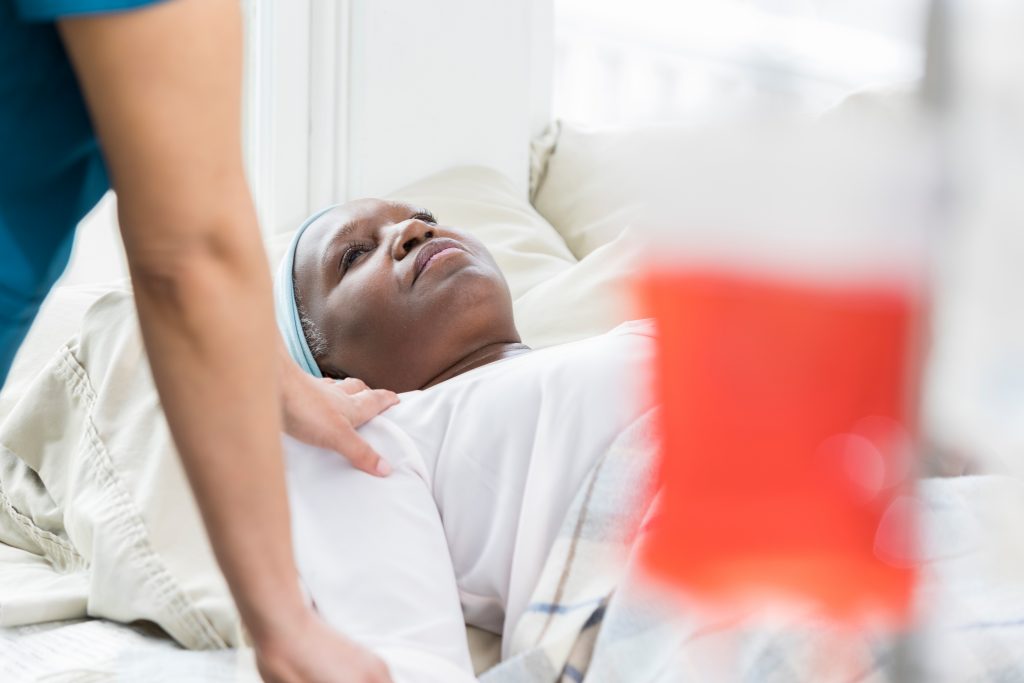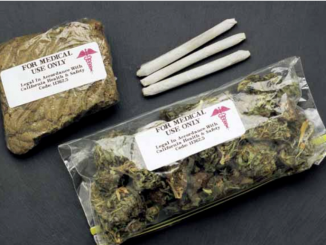The US restrictions on the prescription of opioids had barely any effect in reducing opioid-related deaths, but are menacing the proper pain management care in cancer patients — and other chronic pain patients, Vera Novais reports from the ABC congress in Lisbon
Teva Harrison had excruciating pain. “The ache was deep in my bones, like the worst toothache you’ve ever had, writ large. It throbbed and spasmed and shot like needles throughout my body” she wrote in 2018 in The Walrus. Teva Harrison (1976-2019) had breast cancer metastasis in her bones and some of her organs, and fentanyl was the only way to keep her pain under control. She was struggling with a terminal disease, and the drug had allowed her to get her life back.
But fentanyl, nowadays, is better known from much sadder stories than Teva’s.
In the United States alone, “the number of drug overdose deaths involving fentanyl was stable in 2011 (1,663) and 2012 (1,615), and began to increase in 2013, rising to 18,335 deaths in 2016” reported the Centers for Disease Control and Prevention (CDC): an opioid epidemic comparable to one caused by a contagious disease. Canada, where Teva lived, now faces a similar problem with“more than 12,800 apparent opioid-related deaths between January 2016 and March 2019, according to figures released by Canada’s Public Health Infobase. As a response to the crisis, regulators, legislators and health insurance providers have introduced stricter controls on the dosage and duration of opioid prescription. The debate on the opioid crisis went further and involved also other countries, shaping the doctors’ and patients’ perception of the safety of these drugs.
The debate on the opioid crisis
is shaping the perception of the safety of these drugs
Overdose phantom
The phantom of overdose death never scared Teva Harrison. “I’m grateful to the doctor who prescribed fentanyl to me. The patches have saved me from misery”. Like her, 66.4% cancer patients with advanced, metastatic, or terminal disease, experience pain (Journal of pain and symptom management June 2016 Volume 51, Issue 6, Pages 1070–1090.e9), but unlike her, more than 30% of cancer patients have inadequate pain management (Supportive Care in Cancer Feb 2016, Volume 24, Issue 2, pp 887–892).

Doctors, patients and patient advocates are worried that the opioid crisis in North America can have a negative impact on the rest of the world, jeopardizing the work done in some countries to properly address pain in cancer patients and other patients with chronic pain. “The risk that we face in the world — not only in Europe — is that there’s a reversal of the more liberal attitude towards the use of opioids” Matti Aapro, medical oncologist in Switzerland and President-Elect of the European Cancer Organization (ECCO), told Cancer World.
This could turn in an even worse scenario for low-income countries where pain is already poorly managed. “There are still many places in the world where cancer patients die suffering from a significant amount of pain” Carlos Barrios, medical oncologist and Executive Director of the Latin American Cooperative Oncology Group (LACOG), told Cancer World. “And that should not happen.” But according to the The Lancet Commission on Palliative Care and Pain Relief (The Lancet Global Health March 1, 2018 vol 6, special issue, S5-S6, ), “of the 298.5 million metric tonnes of morphine-equivalent opioids distributed in the world each year, only 0.1 metric tonnes are distributed to low-income countries”.
Matti Aapro, Carlos Barrios and 40 other panel members were part of the Advanced Breast Cancer (ABC) Fifth International Consensus Conference, that took place in Lisbon last November, where a new statement for the ABC Guidelines was approved: “The advanced breast cancer community is aware of limitations that are being imposed worldwide, as a consequence of the perceived abuse of opioids in certain areas of the world. The ABC community is united in insisting that cancer patients should not have restrictions placed that will limit their access to adequate pain control.”
Indiscriminate restriction
The epidemic-like overdose deaths had driven the North American authorities to declare a public health crisis in 2016. US doctors were advised to restrict the opioid use, the opioid production was greatly reduced and the CDC released new opioid guidelines meant for primary care physicians treating chronic pain in adults. But three years later, the authors of the guidelines found that the guidelines were wrongly implemented, they wrote in the New England Journal of Medicine (N Engl J Med 2019; 380:2285-2287 DOI: 10.1056/NEJMp1904190). “Unfortunately, some policies and practices purportedly derived from the guidelines have been inconsistent with, and often go beyond its recommendations,” the researchers wrote.
Some policies and practices purportedly derived from the guidelines
have been inconsistent with, and often go beyond, its recommendations
“We are seeing physicians being reticent to prescribe pain medication to patients that actually need it” told Shawna Rich-Ginsberg, Senior Manager of Support & Education at Rethink Breast Cancer. “They are scared about their regulatory colleges coming down on them, penalizing them, doing investigations” said the Canadian psychotherapist.
The 2016 CDC guidelines were meant for patients with chronic pain not related to cancer, palliative care, or end-of-life care, but patients with pain associated with cancer, surgical procedures, and acute sickle cell crises are the ones that have been suffering the most with such misapplication. Adding to that, cancer patients had faced opioid shortages and delays caused by opioid preauthorization requirements from insurers.
“I’m just afraid that the noise about the dramatic situation in the US will lead worldwide to indiscriminate restriction on access to opioids and that we will find ourselves once again in the situation — that many countries in the world still face today — were prescribing opioids is extremely difficult” said Matti Aapro.
India is already facing the impacts of the US overdose epidemic. “Drugs like tramadol were easily available but the opioid crisis in the US has affected it, especially in the state of Punjab, where there is a major problem with drug addiction” added Reena Sharma, Head in Palliative Care Field Services in CanSupport. She personally faced the reality in Delhi and the states of Haryana, Punjab and Uttar Pradesh, she said, but opioid addiction may be a problem in other Indian states as well.
Malaysia, in turn, chose to control how many pills the patients are given each time they go to the doctor. “We don’t really have that much of a problem getting access to opioids through doctors’ prescriptions” explained Ranjit Kaur, breast cancer survivor and President of the Breast Cancer Welfare Association Malaysia. “But people have to keep coming to get their drugs.” In Malaysia regulation of opioids is not entrusted to the Ministry of Health as in many other countries, but instead to the Ministry of Home Affairs, that is looking at in in the perspective of illicit drug abuse, the patient advocate said.
Many countries face drug abuse problems but no other is actually facing an epidemic like the US. Brazil is one of the examples with severe illicit drug abuse problems that hasn’t impacted the patients’ treatment, said Carlos Barrios. The US opioid crisis hasn’t affected the use in advanced cancer patients in China either, Binghe Xu, Director of the Department of Medical Oncology at the National Cancer Center, told Cancer World. Nor has he seen any advanced cancer patient with an opioid addiction problem.
The US example can even be somehow helpful for other countries like Nigeria, explained Mampak N. Nanre, nurse and Coordinator of the Post Basic Oncology Programme at the National Hospital Abuja: “The training we are getting now [on pain management] is being supported by donors from the diaspora alerted by the US situation”.
Overdose, a very unlikely event
“Unfortunately the opioid crisis has painted everything with the same brush” Shawna Rich-Ginsberg regretted. Opioid overdose deaths and opioid prescription for pain management often came together when the discussion about the opioid epidemic arises, but Carlos Barrios alerted that mixing the two situations will not help the millions of people that die in pain. Quite the opposite. It will get harder and harder to get appropriate pain management care.
“I found it very difficult to believe that if you use a drug appropriately in clinical practice, it will lead to death because of drug addiction” said the Director of the Oncology Research Unit at Hospital São Lucas, Porto Alegre, Brazil. First, Barrios recalled that if by any chance a patient gets an overdose with the medication there are antidotes that can fix the problem easily. Second, when the drugs are properly used the chances of becoming addicted are extremely low and doctors that see the patients frequently can easily spot any behavioural change.
“I’ve been an oncologist for the last 30 years and I’ve never seen a patient become addicted to morphine or any other opioid. Never” Carlos Barrios said. Binghe Xu also states that “for patients with advanced cancer, there is no opioid addiction problem” in China.
But one must remember that “patients with cancer who receive opioids might be at a higher risk of nonmedical opioid use than was previously believed” wrote Shalini Dalal and Eduardo Bruera, from the Department of Palliative, Rehabilitation and Integrative Medicine at the University of Texas, in a paper published by American Society of Clinical Oncology (https://ascopubs.org/doi/pdfdirect/10.1200/EDBK_100020). The authors recalled a study that found a slight increase in opioid-associated deaths in cancer patients from 2006 to 2016, but also made clear that “deaths were 10 times less likely to occur in patients with cancer compared with patients without cancer.”
When the drugs are properly used,
the chances of becoming addicted are extremely low
and doctors that see the patients frequently can easily spot any behavioural change
General practitioners need more training
Addiction is not the first thing oncologists or palliative care physicians have in mind when they have to treat severe pain in cancer patients. “Once a patient is in pain from cancer, physicians feel a lot more at ease to prescribe what they need to” said Shawna Rich-Ginsberg. That is the case for specialists but not for primary care physicians, likely because of a lack of training, which potentially makes cancer survivors vulnerable to the effect of the new Canadian guidelines, according to a paper published in Current Oncology: “Even in countries with access to prescription opioids, pain is inadequately treated, with one-third of patients with cancer experiencing chronic pain” according to the authors.
In Asia, undertreatment or undermanagement of cancer-related pain seem to represent an issue almost double in size compared to Europe or the U.S.. “India has a very low consumption of opioids with the number of patients with advanced cancer,” said Reena Sharma, from CanSupport, adding that hospitals, medical institutions and pharmacies need a special license to dispense stronger opioids, one that is not always easy to get.
Only trained doctors can prescribe opioids correctly, said the palliative care physician. “Most other doctors will not prescribe them at all or will prescribe a very low dose.” Which means that even the patients taking opioids will still suffer from pain. And if there’s a lack of correct treatment when we consider Indian cities, the gap grows bigger when we think about rural and remote areas. The same is happening in China, for example. In cancer hospitals there’s no restriction to prescribe pain medication but “in some rural and remote areas, many people cannot get standard care because of poor transportation, cost, education, etcetera” said Binghe Xu.
Pain medications can often be expensive for cancer patients. That’s why the Ugandan idea was as fantastic as it was simple — and cheap. Mixing a powdered form of morphine with water, health officials managed to create a drinkable analgesic powerful enough to give the needed relief and diluted enough not to foster addiction, US National Public Radio reported. Another important move was to let nurses prescribe the mixture, especially in rural areas where the doctor-to-patient ratio is so poor. Botswana, Rwanda and Swaziland followed the idea and they are also covering the cost of liquid morphine for patients.
In Nigeria, there was a time when not even the hospital in the capital city had enough morphine for the patients. Now they have plenty at city hospitals, Mampak N. Nanre, nurse at the National Hospital Abuja, told Cancer World. The country has the drugs, but the accessibility hasn’t improved in the same proportion: primary care health workers in rural areas are not authorized to prescribe opioids and pharmacists in the villages don’t even have the licence to sell them. Patients have to be treated in the cities but quite often need to go back to the villages and stop treatment because they cannot afford to stay away from home.
Travelling is frequently a burden for cancer patients and their families. That’s why it is so important to have palliative care wards closer to villages and rural areas, like it is happening in Malaysia. They are so close for some patients that they can travel daily, Ranjit Kaur said. “For those who find it difficult to travel regularly, they have a welfare residential place for the family member who is looking after the patient.”
When opiophobia starts in the clinic
Distance between home and care centre and strict regulations aren’t the only obstacles cancer patients have to face. “Since many of our family physicians are not trained to use opioids, they are opiophobic and often will advise the patient to stop the morphine prescribed by the palliative care doctors” Ravinder Mohan, officer in charge for Morphine at CanSupport, told Cancer World.
Physicians avoid using opioids to control pain, Carlos Barrios said. If this is true for cancer patients, it may be even worse for other diseases that need appropriate pain management. “Even though we have the drug available [in Brazil], there’s a lot of preconceived ideas in the public and in clinicians that will reserve opioids for the very late stages of the disease”.
Training is key. The National Hospital Abuja, in Nigeria, now has a “comprehensive training of pain management” said Mampak N. Nanre, who’s also a professor. “It really has taken pain management to a very good level”.
But it wasn’t always like that. And culture also has a role to play here: “We have this superstition that people should be in pain. People should hide their pain and women in labour shouldn’t even shout”. With better pain management options and training the country aspires to have “a pain-free society”.
Cancer patients don’t want to feel pain but media coverage on the opioid epidemic makes them fear that they will get addicted or that they will die as a result of taking opioids (Journal of Oncology Practice 15, no. 5 (May 1, 2019) 229-231). And the more educated groups are the most opiophobic, states Ravinder Mohan, from CanSupport in India. The same in Canada. “A lot of cancer patients don’t want to take pain medication. There’s some stigma associated with that, they don’t like the way pain medication makes them feel, in terms of the fuzzy mind, and some of the side effects are really difficult to manage” Shawna Rich-Ginsberg explained.
The fear, stigma, — and sometimes the lack of money in developing countries —, makes people turn into traditional and alternative medicine, like ayurvedic medicines in India. Also in Nigeria people often go back home after being diagnosed with cancer and seek the help of traditional healers, spiritual guides, or pastors. When all this fails, patients go back to the hospital, often too late. “I don’t think that it gives them any help, it rather gives them more torture” said Mampak N. Nanre.
Education might be the solution for patients to understand that “leaving with pain is way more destructive than taking opioids or pain medication” said Shawna Rich-Ginsberg. Ranjit Kaur has used a specific strategy in Breast Cancer Welfare Association Malaysia: “What I have done recently was to engage the palliative care physician but not using the word palliative care.” She says to the metastatic cancer patients she deals with: “He is going to talk about how you can manage your life”. When the time comes for them to be on opioid medication, they already trust the doctor.
Carlos Barrios has a different understanding: “I think we need to concentrate on educating the physicians, which ultimately are responsible for the prescription”. Then it is the physician’s job to explain to the patient and the family that morphine or other opioids are the best options to deal with pain. “I don’t know any patient that, when appropriately approached, would refuse to use opioids” the Brazilian oncologist said. “Patients have preconceived ideas that doctors can change. Besides, the alternatives to opioids are more toxic, less effective, bring more suffering, and are certainly more expensive”.
When pain management is appropriately applied in early stages patients quality of life greatly improves. “Managing someone’s pain it’s life-changing” said Shawna Rich-Ginsberg recalling personal experiences. Her father in law was living in agony until he started pain medication. Then he was able to sit and eat with the family. “With my best friend, I was able to take her one last trip to New York. She wouldn’t have been able to take that trip without having pain medication.”





